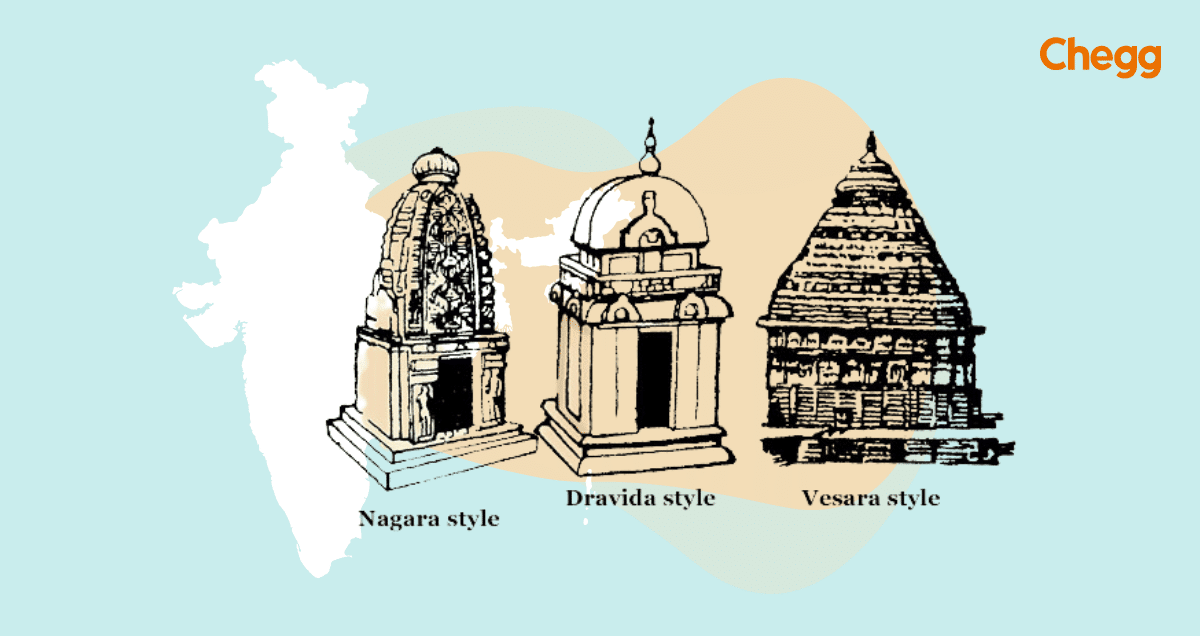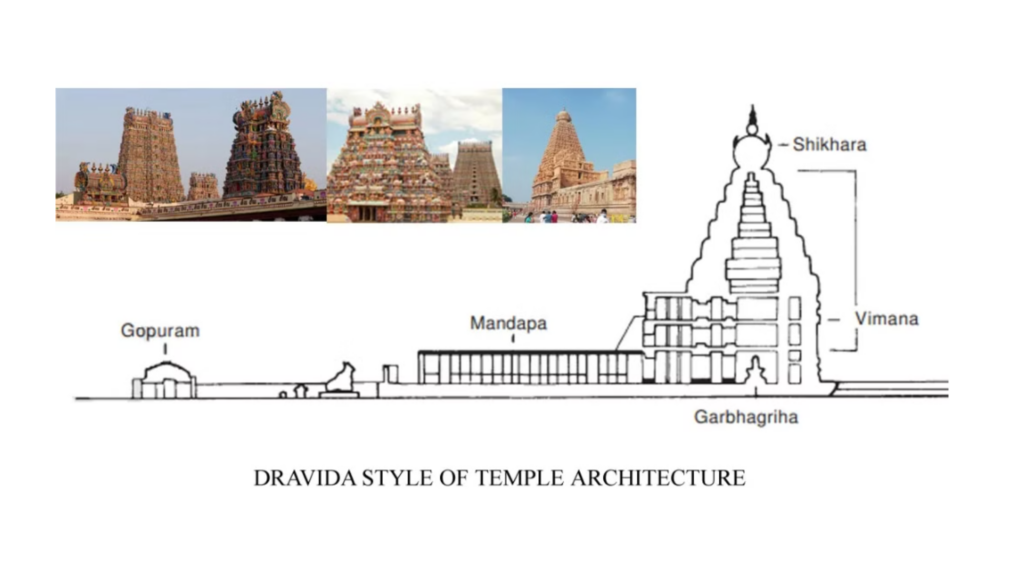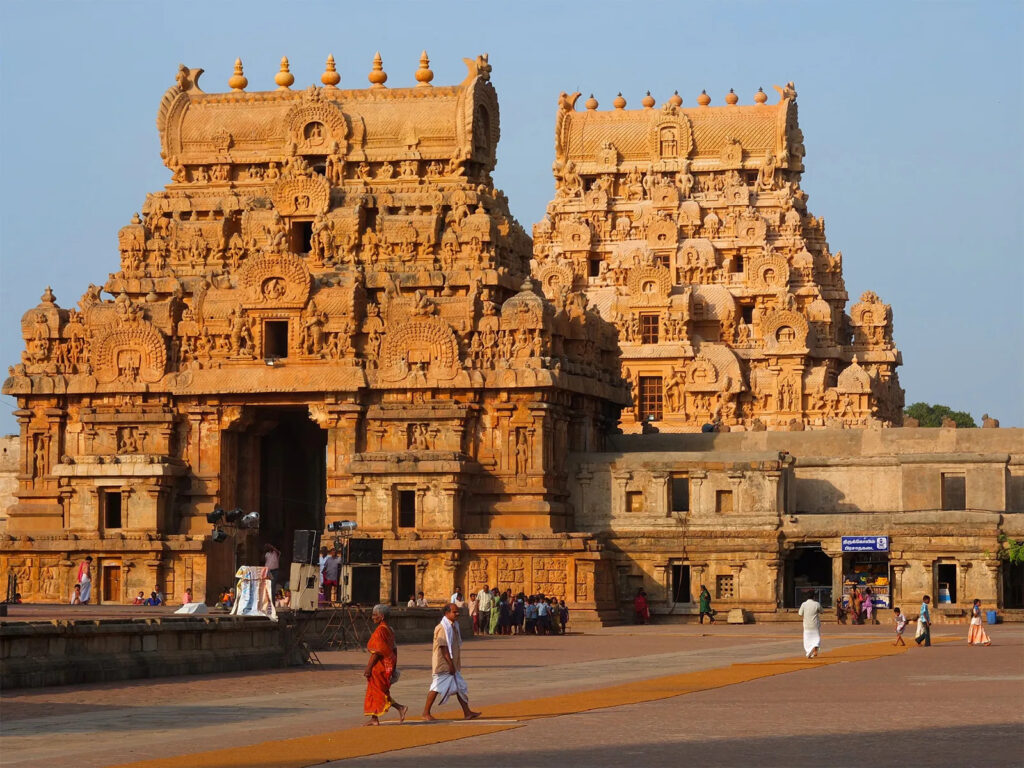Ancient Indian Architecture: Timeless Styles & Hidden Secrets!


Quick Summary
- Ancient Indian architecture showcases the country’s rich cultural and spiritual heritage through diverse styles, including Buddhist stupas, Hindu temples, and Jain monuments.
- Key features include intricate carvings, rock-cut caves, and grand temples like those in Khajuraho, Ajanta, Ellora, and Konark.
- Each dynasty, from the Mauryas to the Cholas and Guptas, contributed unique elements to temple and palace architecture.
- These ancient structures symbolize India’s artistic brilliance, spiritual beliefs, and engineering expertise.
Table of Contents
Ancient Indian architecture is a rich blend of art, religion, and engineering that spans thousands of years and various dynasties. It includes multiple structures, from the rock-cut caves at Ajanta to the carefully designed cities of the Indus Valley Civilization. This architecture shows great diversity, with each region and period having its unique style.
The scope of ancient architecture in India is vast, showcasing the subcontinent’s diverse geography and cultural richness. Ancient architecture in India combines structural design with symbolic elements, making each building a blend of beauty and spiritual significance. Every structure reflects a deep sense of aesthetic wonder and divine presence. The engineering methods used in ancient architecture in India were groundbreaking, incorporating advanced ideas in mathematics and town planning.
This fusion of art and science highlights the innovative spirit of ancient Indian builders, whose work continues to inspire and influence architectural practices.
History of Ancient Architecture in India
Showcase of Cultural Heritage:
- Ancient Indian architecture reflects the country’s rich cultural history through intricate designs and enduring structures.
Blending Art and Engineering:
- It highlights how artistry and engineering merged seamlessly to create timeless masterpieces.
- These structures continue to inspire and captivate people globally.
Representation of Values and Beliefs:
- Ancient architecture embodies the time’s religious, social, and cosmic ideas.
- It reflects the intellect and artistry valued by ancient Indian society.
Types of Structures:
- Includes temples, forts, palaces, and monuments that showcase the grandeur of various eras.
- Example: Nalanda University ruins and the Taj Mahal.
Influence on Modern Architecture:
- The symmetry, geometry, and open spaces in ancient architecture inspire contemporary designs.
- Features like open courtyards, decorative brackets, and ornate carvings are still used today.
Educational and Architectural Legacy:
- These ancient works serve as educational grounds for architects and historians.
- They reveal advanced construction techniques and town-planning skills far ahead of their time.
List of the Ancient Indian History of Architecture
The architectural heritage of ancient India is both vast and varied, showcasing a rich history that spans centuries. Ancient architecture in India includes a wide range of structures, from temples and palaces to rock-cut caves and urban planning in the Indus Valley Civilization. Each region boasts its unique style, influenced by local materials, climate, and cultural beliefs. The intricacy and beauty of ancient architecture in India reflect the creativity and skill of its builders, highlighting important spiritual and artistic expressions.
Below is a table that lists of most significant examples, each reflecting the ingenuity of its time:
| Architecture | Ruler | Place | Attribute |
| Ajanta Caves | Various | Maharashtra | Rock-cut caves with Buddhist murals |
| Brihadeeswarar Temple | Raja Raja Chola | Tamil Nadu | Dravidian architecture masterpiece |
| Sanchi Stupa | Ashoka | Madhya Pradesh | Buddhist monument with intricate carvings |
| Mahabalipuram Temples | Narasimhavarman | Tamil Nadu | Pallava dynasty’s rock-cut temples |
| Qutub Minar | Qutub-Ud-Din Aibak | Delhi | Tallest brick minaret in the world |
| Red Fort | Shah Jahan | Delhi | Mughal-era fort with palatial structures |
| Konark Sun Temple | Narasimhavarman | Odisha | The chariot-shaped temple dedicated to the sun |
| Hampi | Various Vijayanagara rulers | Karnataka | Ruins of the last great Hindu kingdom |
| Khajuraho Group of Monuments | Chandela Dynasty | Madhya Pradesh | Erotic sculptures and Nagara-style temples |
| Fatehpur Sikri | Akbar | Uttar Pradesh | Mughal imperial city with unique Indian ancient buildings |
| Rani ki Vav | Bhima | Gujarat | Intricately constructed stepwell |
| Ellora Caves | Rashtrakuta Dynasty | Maharashtra | Monolithic rock-cut temples and monasteries |
| Meenakshi Temple | Various | Tamil Nadu | Twin temples with towering gopurams |
| Dilwara Temples | Various | Rajasthan | Jain temples are known for marble carvings |
| Taj Mahal | Shah Jahan | Uttar Pradesh | Medieval architecture is made of White Marble and had many precious stones like lapis lazuli |
Ancient Architecture of India- Characteristics
The characteristics of ancient architecture in India are deeply connected to symbolism and Vastu Shastra principles-
1. Symbolism and Spiritual Significance:
- Ancient Indian architecture is deeply rooted in symbolism, reflecting cosmic order and spiritual beliefs.
- Structures were designed to express broader cosmic and spiritual ideas, blending artistry with meaning.
2. Principles of Vastu Shastra:
- Temples and other structures were built with precise orientation, balancing the five elements of nature.
- This ensured harmony with the earth’s energy fields, promoting well-being and prosperity.
3. Role of Geometry and Mandala Design:
- Geometry played a crucial role, especially using the Mandala, a ritual symbol representing the universe.
- Fractal patterns and symmetrical designs symbolized unity and the interconnectedness of life.
4. Art, Science, and Spirituality Confluence:
- Ancient structures combined art, science, and spirituality, aiming for harmony between the earthly and divine.
- Each building served as a microcosm of the universe, reflecting the architect’s quest for universal balance.

Sources:- istock photos
What are the Three Main Types of Temples?
Ancient Indian architecture features three distinct temple styles: Nagara, dominant in the north; Dravida, which evolved in the south; and Vesara, a fusion of both. Each of these styles of ancient architecture in India reflects different historical periods and cultural influences, showcasing the rich diversity and depth of India’s architectural heritage.
1. Nagara Style Temples
Nagara style is emblematic of northern India’s temple architecture. These temples have a beehive-shaped shikhara (tower), typically curvilinear. The Garbhagriha (sanctum sanctorum) sits beneath the shikhara, often surrounded by more miniature replicas called Urushringas. Notable examples include the Khajuraho temples in Madhya Pradesh and the Jagannath Temple in Odisha. Their regional presence spans Central and North India with variations such as the Orissan Khajuraho and Solanki styles.

Source:- tripsavvy
2. Dravidian Style Temples
The Dravidian style is predominant in southern India, characterized by its towering gopurams (gateway towers) and sprawling complexes. These temples are enclosed within high walls and the vimana. The structure over the garbhagriha is stepped and rises as a pyramid. The intricacies of Dravidian architecture are evident in magnificent temples like the Brihadeeswarar Temple at Thanjavur and the Meenakshi Temple at Madurai. The architecture is structural and narrative, with walls and pillars depicting stories from Hindu texts.

Source:- ArchiMonarch
3. Vesara Style Temples
Vesara-style temples blend the Nagara and Dravidian architectural elements often seen in the Deccan region. This style emerged as a hybrid incorporating the north’s square-based structures and the south’s circular motifs. The Chalukya dynasty’s temples, like the Virupaksha Temple at Pattadakal, are prime examples. Vesara temples often feature richly decorated pillars and intricate ceiling panels showcasing a confluence of artistic traditions.
Each style contributes to the rich tapestry of ancient Indian architecture, reflecting the subcontinent’s diversity and regional identities. They testify to the ancient building’s ingenuity and the spiritual undercurrent that guided their construction.

Source:- Mystery of Indian
Ancient Buildings in India
Palaces and forts are key elements of ancient architecture in India, highlighting the era’s architectural creativity and defensive needs. Majestic structures like the Red Fort in Delhi and the Agra Fort are prime examples of ancient architecture in India, featuring strong walls, moats, and detailed latticework. These forts were more than just military defenses; they also served as palatial homes, displaying the wealth and power of their builders. The ancient architecture in India found in these forts and palaces reflects a blend of strength and grandeur, offering a glimpse into the sophisticated design and luxury of the time.
Stupas and monasteries hold a special place in early Buddhist architecture. The Sanchi Stupa, for instance, is an architectural marvel that symbolizes the Buddha’s path to enlightenment. These structures served as communal hubs for monks. It played a pivotal role in spreading Buddhism, with its hemispherical domes representing the universe.
Caves and rock-cut structures are profoundly significant in ancient Indian architecture. For instance, the Ajanta and Ellora caves are renowned for their monumental heritage. Carved meticulously into rock faces, these caves serve as serene retreats for monks and are adorned with frescoes and sculptures that narrate the Jataka tales.

Source:- Wikipedia
Ancient Indian Architecture: A Diverse Legacy
Ancient Indian architecture is a rich tapestry covering many significant periods, each adding a unique touch. From grand temples and elaborate palaces to sturdy forts and intricate sculptures, ancient architecture in India showcases a wide range of styles and innovations. Each era of ancient architecture in India brought new techniques and designs, reflecting the changing cultures and needs of the time. This diverse heritage illustrates how ancient architecture in India served practical purposes and expressed artistic and spiritual values, creating a vibrant and enduring legacy that continues to inspire and captivate.
1. Harappan Art and Architecture
The Harappan civilization is known for its urban planning. It boasted advanced architectural features like fortified cities, grid layouts, drainage systems, and standardized fired brick sizes. The Great Bath of Mohenjo-Daro exemplifies their civil engineering and urban planning skills.

2. Mauryan Art and Architecture
The Mauryan period saw the emergence of stone architecture, with Emperor Ashoka pioneering the construction of stupas and pillars. The Ashokan Pillar at Sarnath and the Stupas at Sanchi are monumental examples. These showcase the use of polished sandstone and intricate carvings.

Source:- Adda247
3. Post-Mauryan Architecture
Post-Mauryan architecture spanning the Sunga Kushan and Satavahana periods witnessed the evolution of Buddhist architecture. This era saw the embellishment of stupas and the construction of rock-cut caves. Like those at Ajanta, which were adorned with elaborate sculptures and paintings.

Source:- babamail
4. Gupta Architecture
The Gupta era, often called the Golden Age of India, saw the refinement of temple architecture. The Dashavatara Temple at Deogarh and the temples at Sanchi illustrate the nascent stages of temple construction. This period later influenced Indian architectural styles.

Source: The GK series
5. South Indian Architecture
South Indian architecture is distinguished by its towering gopurams and expansive temple complexes. The Dravidian style began in the Pallava period and flourished under the Cholas and Pandyas. It is epitomized by the Brihadeeswarar temple in Thanjavur with its elaborate sculptures and towering vimana.

Source:- Britannica
Ancient Indian Architecture During the Harappan Civilization
The Harappan civilization showcased advanced urban planning, with a layout that featured grid patterns and sophisticated civic amenities. Cities like Harappa and Mohenjo-Daro were characterized by their systematic streets and standardized urban structures, which reflected a high level of social organization and understanding of urban dynamics.
Harappan architects employed revolutionary techniques utilizing materials like baked bricks, which were uniform in size and quality. This uniformity is a testament to their advanced knowledge of kiln technology and production standardization. It contributed significantly to the durability and resilience of their constructions.
Among the ancient architecture in India, the architectural remains of the Harappan civilization include the Great Bath of Mohenjo-Daro granaries, dockyards, and warehouses. These remnants provide insight into a society that values architectural precision, urban planning, and innovative construction methods.

Source:- indicatoday
Ancient Architecture in India – Mauryan Period
Emperor Ashoka’s reign marked a transformative era in ancient architecture in India. His patronage led to the widespread construction of pillars and stupas. These were not only architectural feats but also mediums for disseminating his edicts.
The Mauryan pillars are renowned for their structural elegance and polished stone finish. The most famous of these, the Ashokan Pillar at Sarnath, bears the four-lion capital and has become an enduring symbol of India.
The builders constructed solid domed structures, like the grand Sanchi Stupa, over relics of the Buddha. These served as focal points for the Buddhist community. They were architectural representations of the universe, embodying the ancient Indian architectural ethos of combining form with spirituality.
Court and Architecture
Stupas, pillars, and palaces are key elements of court art, reflecting architectural and artistic grandeur. Let’s explore their significance briefly.
Places:
Wood was the primary building material used in Mauryan architecture. The Ashoka palace in Kumrahar was enormous. It was a three-story wooden building with carvings and sculptures throughout. Chandragupta Maurya modeled his palace after the Achaemenid palaces in Iran.
Pillars:
The state used inscriptions on pillars as an emblem to celebrate military triumphs or spread religious ideas. On average, the pillar, composed of Chunar sandstone and consisting of four sections, stood 40 feet tall. Only one stone, or monolith, was utilized. An illustration would be the Lauria Nandangarh pillar in Champaran, Sarnath.
Stupa:
According to Buddhist tradition, people constructed the nine stupas following the Buddha’s passing. Buddha relics were found at the Medhi of eight, and the relics’ original location was in a pot at the ninth. For instance, the oldest stupas are Piprahwa in Uttar Pradesh and Sanchi in Madhya Pradesh.

Source:- vajiram IAS

Source:- Wikipedia
Post-Mauryan Ancient Indian Architecture
The Sunga and Satavahana dynasties significantly enriched ancient Indian architecture. They expanded on Mauryan foundations, enhancing the complexity and artistic detail of stupas and other religious structures.
During this period, stupas became more elaborate, with intricate railings and sculptural decorations, as seen in the Bharhut and Amaravathi stupas. These structures evolved not just to house relics but also to depict narratives from the Buddha’s life.
The Western Kshatrapa and Saka eras saw the incorporation of foreign elements into Indian architecture, leading to a more eclectic style. This period also marked the beginning of rock-cut architecture, with the Kshatrapas contributing to the development of cave temples.
Cave architecture reached new heights with sites like the Bhaja and Karla Caves. These rock-cut monasteries and chaityas (prayer halls) featured intricate facades and interior carvings, showcasing a blend of architectural prowess and religious devotion.

Source:- ghumakkar
Ancient Architecture in India During the Gupta Age
During the Gupta Period in India, people revered it as the period of Indian Art and architectural splendor, during which they erected famous Vishnu and Shiva temples. In this age, India’s most sophisticated form of ancient architecture appeared with the Dashavatara temple in Deograh. At the time, people believed it to be a perfect example of such aesthetics and spirituality. During this period, the ancient architecture in India reflected a blend of intricate artistry and spiritual significance.
The Dashavatara temple stood as a masterpiece of ancient architecture in India, showcasing a perfect harmony of design, proportion, and ornamentation. This era left an enduring legacy, further cementing the importance of ancient architecture in India in the world’s cultural and historical heritage.
Ajanta and Ellora caves, with their breathtaking murals and sculptures, are the epitome of rock-cut Architecture. They are a mix of religious sanctity and aesthetic splendor. The monks used the caves both as monastic retreats and as canvases. These produced the most sophisticated art dating back to Ancient India.

Source:- Wikipedia
Also Read:-
- Jantar Mantar: A Wonders Journey
- Classical Dance of India
- iron ore mines in India: Unearthing India’s Iron Wealth
- The Revolutionary Khilafat Movement: An Overview of Facts
- Qutub Minar: An ancient Monument
- Golden Temple: History and Architectural Evolution
- Tallest Building in India: A Simple Overview
- 7 Wonders of India: An Overview
- Christ the Redeemer Statue: History, Height, and Facts
- Ajanta Caves: Magnificent Marvels of Ancient Art
- Elephanta Caves: Unvеiling thе Mystiquе of Anciеnt Marvеls
South Indian Architecture
South Indian architecture is characterized by the grand Dravidian style, featuring towering gopurams and expansive temple complexes. The Chola dynasty’s architectural marvels, such as the Brihadeeswarar Temple, are a testament to their engineering prowess and artistic vision.
These temples’ elaborate sculptures and towering vimanas embody the divine. The Vijayanagara Empire furthered this legacy. The Hampi ruins reflect a blend of innovation and sacred geometry, marking the zenith of South Indian architecture.
Relation between ancient Indian architecture and current design
| Aspect | Relationship between Ancient Indian Architecture and Modern Design |
|---|---|
| Symmetry and Geometry | Ancient Indian architecture’s emphasis on symmetry and geometric patterns influences modern design. |
| Spiritual Symbolism | Spiritual elements from ancient Indian designs are incorporated into contemporary architecture. |
| Decorative Elements | Modern architects use decorative brackets and rich carvings inspired by ancient Indian techniques. |
| Structural Features | Courtyards and other structural features from ancient architecture in India are integrated into modern buildings. |
Conclusion
India’s architectural heritage is a lasting legacy that has influenced many. From the Harappan cities to the Gupta temples and the Chola dynasty, ancient architecture in India showcases a rich history of design and innovation. Modern Indian architects draw inspiration from ancient architecture in India, including the principles of Vastu Shastra and the deep symbolism found in temple architecture. The blend of art and engineering seen in ancient architecture in India continues to guide contemporary designs, reflecting a timeless connection to the past. This ongoing influence highlights how the ancient architectural principles of India remain relevant and inspiring today.
Ancient architecture in India is not just a subject for historians; it remains a vibrant tradition that actively influences modern Indian landscapes. This architectural heritage includes inscribing wisdom onto stone, which continues to be valued as a vital part of India’s culture and identity. Ancient architecture in India reflects past generations’ beliefs and artistic expressions, shaping how people view their environment today.
Its enduring presence reminds us of the rich history that informs contemporary design. By preserving and honoring ancient architecture in India, we celebrate our cultural legacy while inspiring future generations to appreciate and learn from this remarkable tradition.
Frequently Asked Questions(FAQs)
Q1. What defines ancient Indian architecture?
The diversity of ancient Indian architecture is reflected by distinct regional styles but united in spiritual and artistic expressions. The Indus Valley civilization had rock-cut caves, grand temples, and urban planning marked with advanced engineering and symbolism. It also had the application of Vastu Shastra principles.
Q2. Give some examples of Indian antiquity architecture.
The rock cut Ajanta Caves
The towering Brihadeeswarar Temple
The Sanchi Stupa, with its exquisite carvings
The royal structure in the Red Fort
The pristine white marble of the Taj Mahal.
Q3. What are the three styles of ancient Indian architecture?
Q4. Why were caves important for architectural development in ancient India?
Caves such as Ajanta and Ellora are the deeper aspects of ancient Indian architectural art. They served as a monastery with elaborate frescoes and sculptures. These structures chronicled histories and other religious stories, reflecting those times’ architectural and artistic prowess.
Q5. Which is the oldest architecture in India?
The oldest building in India is the Sanchi Stupa in Madhya Pradesh. Built-in the 3rd century BCE, this ancient structure is a significant example of Buddhist architecture. The stupa features a dome-shaped design and is surrounded by beautifully carved gateways. It serves as a symbol of India’s rich cultural heritage and historical importance.
Q6. Who was the first architect in India?
Balkrishna Doshi was India’s first architect, known for his significant contributions to architecture. He recently passed away at the age of 95. Doshi was the first Indian architect to receive the prestigious Pritzker Architecture Prize, which honors outstanding work. His legacy continues to inspire future generations of architects in India and beyond.
Got a question on this topic?